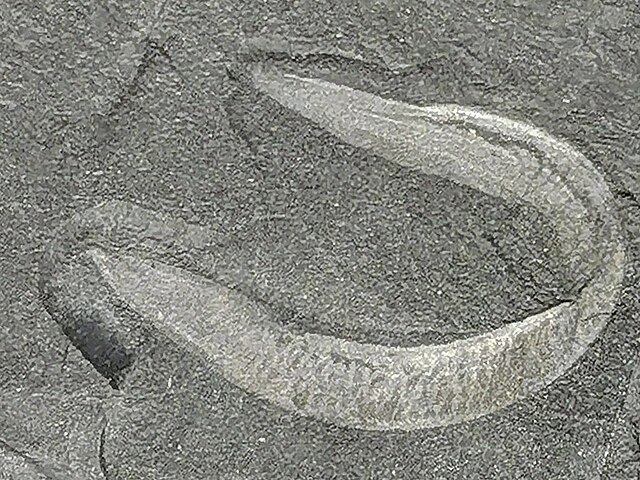Pikaia gracilens is an extinct, primitive chordate animal known from the Middle Cambrian Burgess Shale of British Columbia. Described in 1911 by Charles Doolittle Walcott as an annelid, and in 1979 by Harry B. Whittington and Simon Conway Morris as a chordate, it became "the most famous early chordate fossil", or "famously known as the earliest described Cambrian chordate". It is estimated to have lived during the latter period of the Cambrian explosion. Since its initial discovery, more than a hundred specimens have been recovered.
Pikaia
Fossil of Pikaia gracilens (Syntype USNM PAL 57628)
Plate 20 of Walcott Cambrian Geology and Paleontology II (1911), by Charles Doolittle Walcott, showing fossils of Pikaia and Oesia
The Cambrian chordates are an extinct group of animals belonging to the phylum Chordata that lived during the Cambrian, between 538 and 485 million years ago. The first Cambrian chordate known is Pikaia gracilens, a lancelet-like animal from the Burgess Shale in British Columbia, Canada. The discoverer, Charles Doolittle Walcott, described it as a kind of worm (annelid) in 1911, but it was later identified as a chordate. Subsequent discoveries of other Cambrian fossils from the Burgess Shale in 1991, and from the Chengjiang biota of China in 1991, which were later found to be of chordates, several Cambrian chordates are known, with some fossils considered as putative chordates.
Charles Doolittle Walcott (left) at a fossil quarry excavating the Burgess Shale in British Columbia, Canada.
Maotianshan Shale, site of the discovery of the Chengjiang Biota, (UNESCO world heritage site)
Pikaia fossil from the Royal Ontario Museum's collection.
Metaspriggina fossil from the Royal Ontario Museum's collection.







